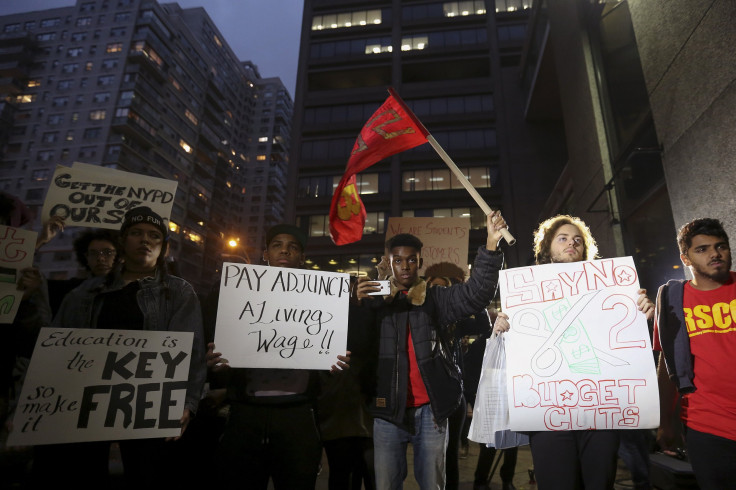Who Pays For Millennials’ College Degrees? Not Their Parents, Especially If They’re Women

As the class of 2017 began tossing their caps in the air this year, aggregate student debt continued its march to nearly $1.44 trillion — nearly tripling its size from a decade earlier. But how much debt a graduate holds differs along gender and racial lines, a new study found.
Women, for example, graduated with less debt, yet received less help from their parents when it came to paying it off, according to the report, released Monday by the student debt data site LendEDU. While the average grad left school with just under $40,000, white women left with an average of $33,000, compared to their male counterparts’ $44,000. Asian women had $36,000, below Asian men’s $43,000, and Hispanic women graduated with $33,000, in contrast to Hispanic men, who left with $42,000. African American men and women deviated from the trend, with black women leaving school with $42,000 in student debt, compared to black men’s $41,000. (Much research indicates that the racial student debt disparity is far wider than found by the LendEDU study.)
Men, however, received significantly more tuition assistance from their parents. Ten percent of men had their college bill covered completely by their parents, compared to 6 percent of women. Half of women paid for college entirely on their own, in contrast to 45 percent of men.
Parental help varied between racial groups as well, with 12 percent of Asian students not paying for any portion of their tuition, compared to 7 percent of white and black grads and 8 percent of Hispanic grads. Just under 30 percent of Asians in the study paid for college completely on their own, while 49 percent of white and black students and 53 percent of Hispanic grads paid for college independently.

Those disparities likely have something to do with who gets financial help from sources other than their parents or their own incomes — namely, grants and scholarships.
After analyzing nearly 6,000 private scholarships in its database, the personal finance site Nerdwallet found in 2013 that women qualified for four times as many scholarships as men did, indicating an abundance in women-specific awards seeking to close historic gaps in opportunity. Nerdwallet also found, however, that only one in 20 scholarships included ethnicity requirements, and that applicants’ home states and the subjects they studied mattered more than ethnic background or gender.
In a 2011 paper, the financial aid expert Mark Kantrowitz found that white students were 40 percent more likely to receive private scholarships than their minority counterparts. Kantrowitz’s data might be a bit old, but the numbers may be significant enough to give even Milo Yiannopoulos pause. (The provocateur and former Breitbart News editor established a “Privilege Grant” for white men, whom he believed to be disadvantaged by affirmative action.)
We are proud to announce that 10 applicants have been selected to receive pilot project grants. https://t.co/ZW8AbUtSJc
— Privilege Grant (@PrivilegeGrant) March 31, 2017
It’s no secret that white women are the biggest beneficiaries of affirmative action — their enrollment rate has about doubled over the past 45 years, eclipsing that of white men, while black and Hispanic women’s enrollment rates have done the same in relation to their male counterparts. As it turns out, they've likely taken advantage of increased scholarship opportunities as well. Now, if only wages could catch up.
© Copyright IBTimes 2024. All rights reserved.






















